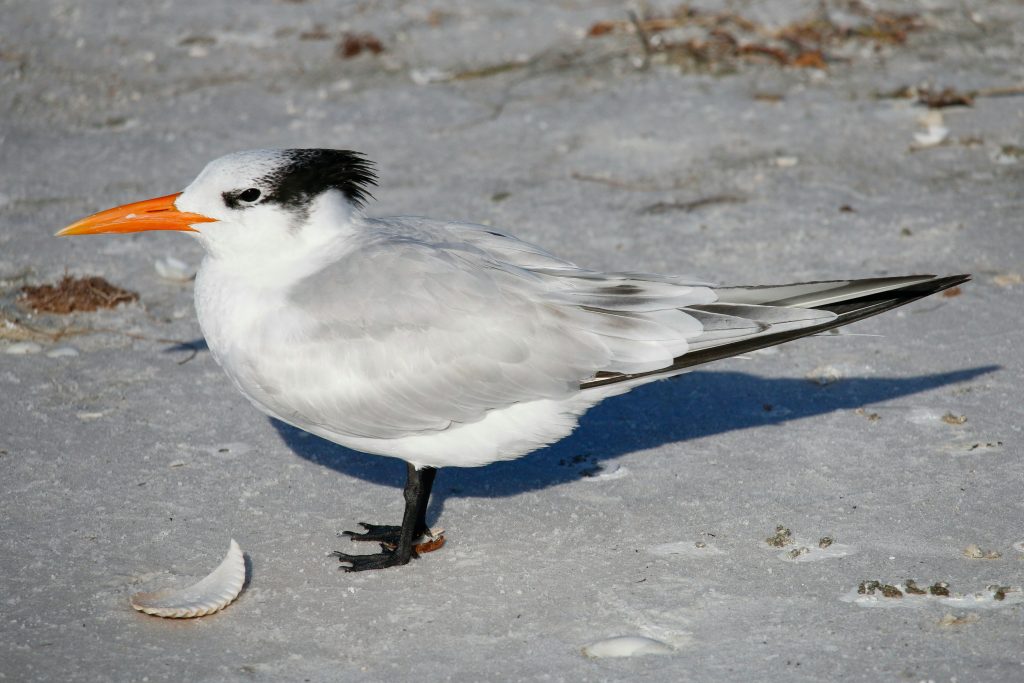The Mar-a-Lago Effect: Unveiling the Allure of Palm Beach’s Presidential Magnet
Palm Beach, Florida, a name synonymous with luxury and exclusivity, has long been a magnet for the wealthy and the powerful. However, in recent years, a new phenomenon has gripped the island, transforming it into an unlikely tourist destination for those seeking a glimpse into the life of a former president. Mar-a-Lago, Donald Trump’s private club and winter retreat, has become more than just a residence; it’s a spectacle, a focal point for a unique brand of political tourism.
For those who may want to see the former president’s motorcade, the streets surrounding Mar-a-Lago and the route to the Palm Beach airport have become a theatre. Spectators line the sidewalks, cameras poised, hoping to capture a moment of history, or at least, a glimpse of the motorcade. It’s a peculiar ritual that blends political fervor with a touch of celebrity culture. It’s a far cry from the usual relaxed pace of the coastal town, and it reflects the magnetism of a figure who continues to command national attention, even outside the confines of the White House.
The allure of Mar-a-Lago extends beyond the immediate spectacle of motorcades. It’s a symbol of a life that is both powerful and removed, an opulent oasis that serves as the backdrop for political strategy, business dealings, and social events. The mystique of the estate draws in a diverse group of observers – staunch supporters, curious onlookers, and even those simply seeking a taste of the Palm Beach lifestyle. Local businesses have even adapted to this unusual surge in interest. Restaurants and shops report a noticeable uptick in customers, some eager to chat about their “sighting” of the president, others hoping to capture the essence of the area in their purchases.
## The Economic Ripple Effect of Presidential Proximity
The Mar-a-Lago phenomenon is not just about observing a political figure; it’s also about the economic impact that such a presence brings. The increased foot traffic, both local and from out of state, has created a distinct economic ripple effect in Palm Beach. While this might be considered a boon by some, it also brings challenges. Local traffic can be significantly impacted, especially during presidential visits, and the heightened security measures required can be disruptive. The delicate balance between welcoming visitors and maintaining the everyday quality of life for Palm Beach residents is a constant negotiation.
Beyond the immediate economic gains, the presence of the former president also has an impact on the area’s real estate market. The increased international attention and media focus on Palm Beach elevate its status as a prime location, which in turn influences property values. The island’s image, intricately tied to luxury and privilege, is further solidified by its association with this high-profile presence, making it more attractive to affluent investors and homeowners from around the world.
##### Beyond the Spectacle: Palm Beach’s Changing Identity
The “Mar-a-Lago Effect” is a microcosm of broader trends. It’s a reflection of how our society is increasingly captivated by celebrity, how politics and entertainment are intertwined, and how personal brands can have a dramatic impact on communities. For Palm Beach, it’s a period of rapid change, a moment where its established identity is being reshaped by this highly visible residency. This shift prompts important discussions about the delicate balance between development, tourism, and the preservation of local character. As Palm Beach navigates its altered landscape, it will be interesting to observe how its economy and community continues to adapt to the unique circumstances brought on by this unprecedented presidential magnetism. Ultimately, Mar-a-Lago is far more than a winter retreat; it’s a mirror reflecting the current state of global fascination.
This phenomenon demonstrates how quickly a single location can transform from a quiet, affluent residential area into a hub of activity. The story of Palm Beach and Mar-a-Lago demonstrates the unexpected ways that political figures can reshape economies and influence community dynamics. The next hot topic will undoubtedly involve the long term consequences and changes brought on by this era.
Tags: Donald Trump, Florida, Mar, Mar-a-Lago, Palm Beach, 名流效应, 房地产, 政治, 旅游业, 社区动态, 经济影响
Hurricane Milton Approaches Florida: A Major Threat Looms on the Horizon
As Florida braces for the impending arrival of Hurricane Milton, residents are urged to prepare for severe weather conditions that could pose significant risks. The storm, currently categorized as a Tropical Storm, is rapidly intensifying and is projected to reach hurricane status as it approaches the state’s west coast. Meteorologists from the National Hurricane Center have reported that Milton is evolving into an intense hurricane, bringing multiple life-threatening hazards with it.
By Saturday evening, Milton was situated in the southwestern Gulf of Mexico, moving north-northeast. Forecasts suggest that the storm will maintain its trajectory over the southwestern Gulf, where it may strengthen further before making landfall. The potential for heavy rain, strong winds, and flash flooding has raised alarms among local authorities and residents alike.
The National Oceanic and Atmospheric Administration (NOAA) has been actively monitoring the storm, providing updates to ensure that the public remains informed about the latest developments. Early forecasts indicate that tropical storm winds could arrive as soon as Tuesday night, with the most dangerous conditions expected to peak by Wednesday afternoon near St. Petersburg. As the storm approaches, concerns are mounting regarding the possibility of storm surges that could inundate coastal areas, along with damaging winds and rainfall that could lead to severe flooding.
Local officials are urging residents to take the necessary precautions, including securing their homes, stocking up on essentials, and staying updated with the latest weather reports. The storm’s impact will likely be felt across Polk County, with emergency services on high alert to respond to any incidents that may arise as a result of the storm’s fury.
As the situation develops, it is crucial for communities to come together and support one another. The potential for Hurricane Milton to inflict significant damage underscores the importance of preparedness and resilience in the face of natural disasters. Local agencies are readying their response strategies, ensuring that resources are available to assist those in need.
In conclusion, as Hurricane Milton approaches, Florida stands at a crossroads, facing both the challenges posed by nature and the strength of its community. With vigilance and preparation, residents can weather this storm and emerge resilient, ready to rebuild and recover. Stay tuned for further updates as we continue to monitor Hurricane Milton’s progress and its potential impact on our beloved state.
Tags: Florida, Hurricane, Hurricane Milton, Milton, Tropical Storm
Tropical Storm Milton Grows Stronger as it Approaches Florida
As Tropical Storm Milton gathers strength over the Gulf of Mexico, the National Hurricane Center (NHC) is closely monitoring its trajectory towards the Florida coastline. Formed on Saturday, Milton is rapidly intensifying and is expected to reach hurricane status, posing significant threats to the state. Forecasters anticipate that Milton could make landfall as a Category 2 hurricane, bringing with it the potential for flooding rains, dangerous ocean surges, and damaging winds. Communities along the western part of the Florida peninsula should prepare for possible impacts as the storm approaches. The latest spaghetti models and the forecast cone indicate uncertainty regarding the exact path of the storm, but residents are urged to stay vigilant and heed any evacuation orders or safety recommendations issued by local authorities. With the hurricane season still in full swing, Milton’s development serves as a stark reminder of the power and unpredictability of nature. As the Gulf waters remain warm, conditions are ripe for further strengthening of this storm. Residents and emergency management agencies are advised to remain alert for updates from the NHC and local meteorologists, ensuring that they are prepared for the worst as Milton continues its approach. As preparations ramp up, the focus remains on safeguarding lives and minimizing property damage. The coming days will be crucial as the storm’s path becomes clearer, and communities brace for the impending tropical cyclone.
Tags: Florida, Hurricane, Hurricane Milton, Hurricane tracker, National Hurricane Center, Tropical Storm
Tropical Storm Milton Gaining Strength as It Approaches Florida
As Tropical Storm Milton makes its way across the Gulf of Mexico, the National Hurricane Center is closely monitoring its development, with expectations that it will rapidly intensify into a hurricane. Forecasts indicate Milton could impact the Florida peninsula as a Category 2 hurricane, bringing with it severe weather conditions including heavy rainfall, a dangerous storm surge, and strong winds.
Originating in the Gulf on Saturday, Milton has quickly developed from a tropical storm into a significant weather threat, raising alarms among residents and officials alike. The latest updates from the National Hurricane Center reveal that the storm is on a direct trajectory toward Florida, with spaghetti models indicating a likely landfall in the western part of the state. The potential for flooding and high winds has prompted local authorities to prepare for the worst.
Residents in the Tampa Bay area and surrounding regions are urged to stay informed and heed warnings as the storm approaches. The National Hurricane Center has provided a cone of uncertainty and detailed forecasts, allowing the public to track the storm’s path and potential impacts closely.
Experts emphasize the importance of preparation as Tropical Storm Milton could bring significant challenges for the coastal communities it impacts. Emergency services are on high alert, ready to respond to any emergencies that may arise from the storm’s effects. Meteorologists are particularly concerned about the possibility of storm surges, which can lead to life-threatening conditions along the coastline.
The situation remains fluid, and predictions may change as new data becomes available. Residents are advised to have emergency plans in place, including securing homes and gathering essential supplies in anticipation of possible evacuations.
As the storm continues to evolve, authorities will provide regular updates, ensuring that the public remains informed about the latest developments. The combination of wind, rain, and rising tides associated with Hurricane Milton could lead to extensive damage in affected areas. With the hurricane season in full swing, this storm serves as a stark reminder of the power of nature and the need for vigilance and preparedness in the face of severe weather.
Tags: Florida, Hurricane Milton, National Hurricane Center, Tropical Storm
Tropical Storm Milton Gears Up to Become a Major Hurricane as It Approaches Florida
As Tropical Storm Milton makes its way through the Gulf of Mexico, the National Hurricane Center has raised alarms over its rapid intensification into a potential Category 2 hurricane. Originating as a tropical storm on Saturday, meteorologists are closely monitoring Milton’s trajectory, as forecasts indicate it could significantly impact the Florida Peninsula within the coming days. The storm’s formation comes amid heightened scrutiny from weather experts, who emphasize the importance of staying informed through the latest updates and projections.
Forecasters have been utilizing advanced spaghetti models, which illustrate various potential paths of the storm, to predict its movement. These models suggest that Milton will likely strike the western regions of Florida, bringing with it the threat of flooding rain, dangerous ocean surges, and damaging winds. Residents in the Tampa Bay area and beyond are urged to prepare for possible disruptions and hazardous weather conditions.
While the storm’s exact path remains uncertain, the National Hurricane Center is updating the public regularly to provide the most accurate information available. The cone of uncertainty surrounding Milton indicates a wide range of potential impacts, and experts are advising communities to remain vigilant as the storm develops.
It is crucial for Floridians to heed evacuation orders if issued and to stock up on essential supplies as the storm approaches. Emergency management agencies are on alert, ready to respond to any emergencies that might arise from the storm’s landfall.
As Hurricane Milton approaches, it serves as a reminder of the importance of preparedness and resilience in the face of natural disasters. The community is encouraged to stay informed and work together to ensure safety measures are in place. As the storm’s predictions evolve, the focus remains on protecting lives and property while navigating the challenges posed by such formidable weather events.
In light of Hurricane Milton’s impending arrival, it is essential to follow local news updates and heed the advice of weather authorities. Monitoring the storm’s progress will be vital for all residents along the Gulf Coast, as preparedness can significantly mitigate the risks associated with hurricanes.
As we brace for Milton’s impact, the collaboration between meteorologists, emergency services, and the community will be paramount in overcoming the challenges posed by this tropical storm-turned-hurricane. With the potential for severe weather on the horizon, residents are reminded of the power of nature and the importance of readiness in safeguarding lives and homes.
Tags: Florida, Hurricane Milton, Hurricane Preparedness, Tropical Storm
Tropical Storm Milton Poised to Strengthen Into Major Hurricane Threatening Florida
As the Gulf of Mexico continues to brew with tropical activity, Tropical Storm Milton has emerged, showing signs of rapid intensification. Initially forming as Tropical Depression 14, meteorologists are closely monitoring its progression, particularly as forecasts indicate it could soon escalate to a Category 2 hurricane or even stronger by the time it makes landfall. The storm is expected to approach the western coast of Florida, with cities like Tampa and nearby areas bracing for potentially severe impacts.
Computer models and meteorological data suggest that the storm’s trajectory could lead it directly towards densely populated regions, raising concerns about the potential for significant wind damage, heavy rainfall, and flooding. As the National Hurricane Center continues to track Milton’s movements, officials are urging residents in the storm’s path to prepare for the possibility of evacuation and to review safety plans.
The formation of Tropical Storm Milton serves as a stark reminder of the unpredictable nature of hurricane season, and the urgency with which communities must respond to emerging threats. As the storm develops, forecasters will provide updated information regarding its strength, path, and potential impact on the Florida coastline.
In light of the current situation, local emergency services and government agencies are ramping up preparedness efforts. Shelters are being established, and resources are being allocated to ensure a swift response in the event of severe weather conditions. Essential supplies, including food, water, and medical kits, are being stocked in anticipation of potential disruptions caused by the storm.
Residents are encouraged to stay informed through official channels, such as the National Weather Service and local news outlets, as updates on Hurricane Milton will be crucial in the coming days. This situation emphasizes the importance of community resilience and preparedness in the face of natural disasters. As the storm approaches, it is imperative that individuals and families take proactive measures to secure their safety and wellbeing.
In summary, Hurricane Milton is shaping up to be a significant weather event with the potential to cause severe disruptions along the Gulf Coast. The coming days will be critical as communities brace for the storm’s impact and respond accordingly to ensure public safety.
Tags: Florida, Hurricane, Hurricane Milton, Tropical Storm, weather alert
Hurricane Helene: A Brewing Storm Threatens Florida’s Gulf Coast
As the Caribbean waters stir with potential danger, Hurricane Helene is gaining attention as it makes its way toward the Florida Panhandle. The National Hurricane Center (NHC) has been closely monitoring this developing system, which could escalate into a significant hurricane, with forecasts suggesting it may reach Category 3 strength upon making landfall. Residents along the Gulf Coast are urged to prepare as the storm approaches, with the possibility of severe weather impacting not only Florida but also extending its effects to other states, including Tennessee.
The potential for Hurricane Helene has prompted officials to advise local communities to stay updated through reliable weather tracking services. The NHC has been proactive in issuing advisories and updates regarding Helene’s trajectory and strength, showcasing the importance of preparedness in the face of natural disasters. The storm’s path, currently churning in the western Caribbean Sea, raises concerns for coastal communities that could face heavy rain, strong winds, and the risk of flooding.
Experts emphasize the need for residents to have an emergency plan in place, including securing property and stocking essential supplies. The urgency of the situation is compounded by the rapidly changing nature of hurricanes, where conditions can shift within hours, making it vital for those in affected areas to remain vigilant.
The excitement and anxiety surrounding Helene reflect a broader dialogue about climate change and its impact on hurricane intensity and frequency. As storms become more unpredictable, communities are reminded of the importance of disaster preparedness and resilience. This is not just a regional concern; the implications of such weather events resonate throughout the country, affecting the economy, infrastructure, and the wellbeing of countless individuals.
As the days progress, weather forecasts will provide more clarity on Helene’s path and potential impact. For now, the focus remains on safety, as Floridians and other at-risk communities brace for what could be a formidable storm. Observers are closely watching the developments, preparing for the worst while hoping for the best, underscoring the unpredictable nature of hurricanes. With Hurricane Helene on the horizon, the call to action is clear: Stay informed, stay prepared, and prioritize safety above all.
Tags: Florida, Hurricane Helene, Hurricane tracker, National Hurricane Center, Tropical Storm
Mega Millions Jackpot Soars to $800 Million as Players Await Next Drawing
In a thrilling night for lottery enthusiasts, the Mega Millions drawing revealed no jackpot winner for the staggering $740 million prize. As anticipation built, players from all walks of life eagerly awaited the outcome, only to find that their hopes for instant fortune would have to be postponed. The latest draw, held on Friday night, has now pushed the estimated jackpot to an eye-watering $800 million, a beacon of hope for many. The last time the jackpot was claimed was on June 4, when a lucky winner in Illinois took home a jaw-dropping $552 million. The absence of a jackpot winner this time around means the prize will continue to grow, attracting more players to purchase tickets in hopes of landing the life-changing sum. While the elusive grand prize remains unclaimed, several players did experience a taste of luck. A player in Florida celebrated a $1 million win, courtesy of matching five numbers in the drawing. Additionally, players in six states including California, Illinois, New Hampshire, Ohio, Texas, and Florida, each took home second-tier prizes worth $1 million, showcasing that while the jackpot remains out of reach, significant wins are still within grasp for many. As the excitement mounts for the next drawing, lottery players are reminded that the odds of winning the Mega Millions jackpot are steep, but the allure of the game continues to draw in hopeful ticket holders. With the next drawing on the horizon, the anticipation builds for what could possibly be the largest jackpot in Mega Millions history. Players are encouraged to check their tickets and remain hopeful, as the quest for the Mega Millions jackpot continues. Will the next drawing finally produce a winner, or will the jackpot keep climbing? Only time will tell, but the excitement is palpable, and the community is abuzz with lottery dreams.
Tags: Florida, Jackpot, Lottery, Mega Millions drawing, MegaMillions, Winning
Florida Double Murderer Sentenced to Death: A Justice System in Action
In a poignant culmination of justice, a Florida judge sentenced 30-year-old Wade Wilson to death on August 27, 2024, following his conviction for the brutal murders of two women in Cape Coral. The grisly crime, which took place on October 7, 2019, shocked the local community and captured the attention of many across the nation. The jury’s recommendation of the death penalty, which saw nine out of twelve jurors in agreement, reflects the gravity of the offenses that Wilson committed against Kristine Melton, aged 35, and Diane Ruiz, aged 43.
The courtroom was filled with a tense atmosphere as Judge Nick Thompson delivered the sentence, affirming the jury’s stance on the severity of Wilson’s actions. “This is a case that underscores the impact of heinous crimes on families and communities,” Judge Thompson stated, emphasizing the importance of accountability in the face of such tragic loss.
The question on many minds, however, is how long Wilson will actually wait on death row. The timeline for executions can vary significantly depending on numerous factors, including appeals and the complexities of the judicial process. Legal experts suggest that it could take years, if not decades, before Wilson faces the ultimate consequence of his actions.
Wade Wilson’s case has not only raised legal and moral questions but has also ignited discussions about the efficacy and ethics of the death penalty as a form of punishment. Advocates for the death penalty argue that it serves as a necessary deterrent against violent crime, while opponents raise concerns about its morality and the risk of wrongful convictions.
As the case continues to unfold, the families of the victims are left to grapple with their immense loss. The emotional toll of such tragedies extends far beyond the courtroom, affecting friends, loved ones, and the wider community who are left seeking closure. In a statement, a family member of one of the victims expressed, “No sentence can bring back our loved ones, but we hope this brings some sense of justice and peace to their memory.”
The case has spurred a renewed interest in similar cases across the state, prompting discussions about the death penalty’s role in Florida’s justice system. With a history of high-profile murder cases leading to death sentences, many are questioning whether the system is equipped to handle such severe penalties fairly and justly.
Florida has been one of the states with a high number of death row inmates, and this recent case adds to a complex narrative surrounding capital punishment in the state. The public’s reaction has been mixed, with some advocating for reform while others support the existing laws. As the legal proceedings continue, it is important for the community to engage in constructive dialogue about how to address violent crime and ensure that justice is served effectively and humanely.
In the wake of this sentencing, Florida residents and the broader public are left to reflect on the implications of such cases for the justice system and the lives forever altered by tragic violence. The story of Wade Wilson serves as a grim reminder of the devastating impact of crime, but also highlights the ongoing debate about justice, punishment, and the legal system’s ability to respond to such profound loss.
Tags: Death Penalty, Florida, justice, Murder, Wade Wilson







